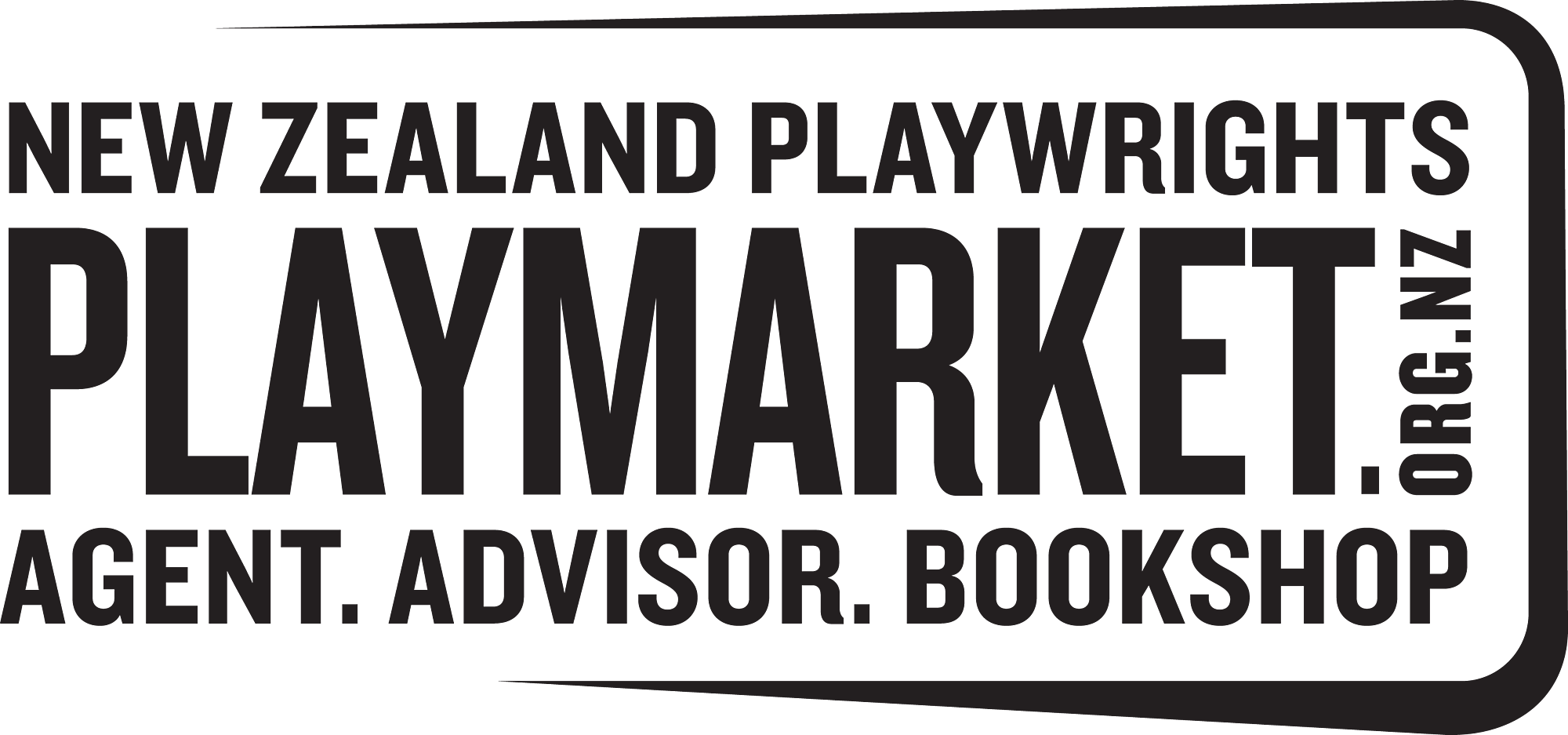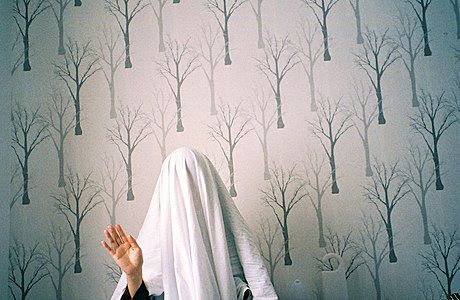Landing the Kite by Working with the Wind: Playwrights and Devising
Natasha Hay talks about the art of collaboration with a range of playwrights who are adept at working in collective devised processes
We're excited to be partnering with Playmarket this year to unearth great writing and other gems from their archives, and to showcase our country's best playwrights. This article first appeared in the Playmarket Annual 2015. Natasha Hay talks about the art of collaboration with a range of playwrights who are adept at working in collective devised processes: Eli Kent (Black Confetti, All Your Wants and Needs Fulfilled Forever - pictured above), Jo Randerson (Banging Cymbal Clanging Gong, Yo Future, White Elephant) Rachel Callinan (End Game, Checkout Chicks) and Vela Manusaute (The Factory).
Eli's play Peer Gynt [recycled] with Auckland Theatre Company opens tonight as part of Auckland Arts Festival. While Eli works collaboratively with his company The Playground Collective, this adaptation is singularly authored (with the help of that Ibsen guy).
Theatre by its very nature is a public forum. It makes sense that the art of writing for the stage needn’t be a lonesome pursuit carried out in the privacy of one’s own imagination. Alone at the keyboard is ultimately the writer’s fate, but many playwrights find huge benefits from working in tandem along the way or devising from the get-go, sharing ideas and letting the work evolve as a living, breathing entity.
But just how easy is it for a writer to work as part of a creative team sharing the authorship, especially if you’re the one with the vision and ideas and earned your stripes flying solo?
For Eli Kent, the process of writing a play has always been hugely collaborative: “I’m not someone who can hole up in a shack somewhere and work tirelessly by myself on some ‘masterpiece’. I’m incredibly self-conscious and wracked with doubt about everything I write. So I have to bounce ideas off other people to get a sense of what’s interesting or relevant to others, to problem-solve, to expand on the theme.”
I’m not someone who can hole up in a shack somewhere and work tirelessly by myself on some ‘masterpiece’.
Vela Manusaute feels his best work happens when sharing ideas with other creative people all gunning for the same idea – not forgetting the need to make South Auckland laugh. Most of his Kila Kokonut Krew work, he says, has been devised. “It’s an organic process that only comes alive on the floor. And it’s faster this way. I’ve more options collaborating with other people – and I know what works and what doesn’t. The strength of collaborations is that, as a writer, I get more out of it.”
This is especially true, says Rachel Callinan, if you are collaborating with someone you click with – a trusted sounding board to bounce ideas off. “You can disregard crap ideas quickly and pick apart trickier ideas... I feel as though a script comes into shape a lot faster when there’s a team working around it. When things aren’t going great, and you’re working alone, it can sometimes turn into a real stumbling block, but if you’re working alongside someone who is in the work as deep as you are, you get over yourself pretty quickly.
“However, for me personally, writing solo and being alone with an idea for a long period of time tends to bring out a lot more complexity and subtlety, and the ‘quiet’ of working alone allows you to really dig deep into ideas.”
Hunting in a pack, according to Jo Randerson, means there are more of you to catch the beast – “that entity often unknown, a mysterious but uniquely formed creature of its own right, perpetually just around the corner”.
We don’t abandon collective responsibility and just rely on one hunter to catch the beast.
The challenge however, she says, is to stay focused and not run off in all directions. “Or, you all run off but make sure you come back together. It’s not that everything has to be done collectively. But that we don’t abandon collective responsibility and just rely on one hunter to catch the beast.”
So is it the writer’s role to get to the core of what the “beast” is? Sure, says Kent, but it’s actually a job that falls to everyone involved in regards to their part. “What we do in our company (The Playground Collective) is try and define early on what the central question of the show is. It’s not always a question, but a sentence that sums up for everyone what we’re trying to achieve. We write it up on the wall and always refer to it and ask ourselves whether what we’re doing is holding the question. But everybody – director, writer, actor, designer – strays from it at some point.”
A big plus for Kent when making devised theatre is the design can be fully integrated from the start. Writing solo means it’s harder to get a sense of what it’s actually going to look like – what the images are.
“The designers are there in discussion with everyone else. This means that you don’t just get a surface idea layered over performance, but a fleshed-out world with its own laws, its own way of being inhabited. The actors understand how they can move around the world and the limits of the world. The world that the designers have created might shape what needs to be said in words.”
Randerson recalls a conference where a senior playwright spoke passionately about the necessity of the writer in the process – that a project wouldn’t fly without this role.
“While I have seen many productions that are not developed with integrity, that fail to hit home to an audience and that lack intention and purpose, I do not see the ‘writer’ as the only person capable of providing this. I know designers, directors, performers and producers who can also steer a project towards a focused sense of meaning...I don’t see the playwright as the top of the hierarchy in the theatre-making process. Until we can shift the dominance of this thinking, we will continue in a 20th-century mindset of theatre being plays”.
Collective ownership of a work creates an extremely powerful performance, she stresses. Having said that, she admits that as a writer, you’re expected to assert your voice.
“Maybe you are allowed to stamp your foot, too, and insist on something – a word, or phrase, or pause...The word ‘writer’ to me is almost interchangeable with ‘designer’ – someone who authors a certain part of the process. I like to let the process evolve depending on the gathering of people involved and what their strengths and desires are, and the needs of the particular project...[As] a writer in any kind of process, I try to speak up when I feel I have something to offer, and to listen, and to put forward anything I can which I think may be of use. I can’t always delineate or define exactly how the process works, but it works.”
There are elements out of your control, and you have to find a way to land the kite by working with the wind.
Really, it’s about being flexible, almost like flying a kite. “There are elements out of your control, and you have to find a way to land the kite by working with the wind.”
So what does the writer bring that is essential to the whole process? Apart from the ubiquitous biscuits for meetings, Callinan quips, it's the skills of crafting a narrative.
“You can get together and talk around ideas and scenarios until you’re blue in the face, but at some point you have to make a decision – actually put on paper your little nuggets of discovery, fitting them together in a way that stays true to the overarching idea. You’re a decision-maker in a sense, and need to pick and choose the best and most useful bits.
“Creativity really flies when you have boundaries, and I see the script – or the act of writing and recording the product of a collaboration – as setting a framework to work inside, or outside of, especially when going into a workshop environment; it’s creating a point of reference to work from. I’ve definitely been in situations where ideas get overcooked, you drift further and further sideways...You need to trust your gut, follow a narrative path that feels right...And whether it is or it isn’t, you create a point of reference that you as a team can work from.”
Making sure everyone is on the same page is the stuff of collaboration, says Manusaute. Essential to the process is having a writer who listens.
“Sometimes as a writer we are very precious about what we want to say – but sometimes it does not work or serve the purpose of the play...It’s hard being a playwright and trying to explain my ideas to actors and the people I work with, so they can get what I mean.”
So vision and ideas are necessary, he says, but equally important is acute listening for what actually works for an audience.
Sometimes the things that annoy me become the strongest parts of a work.
Randerson agrees: “I have to listen hard when I am writing in a devising process. Listen for what I don’t like, because there may be a prejudice that I have there. Sometimes the things that annoy me become the strongest parts of a work. I listen to the way all the different voices express their feelings/thoughts, or don’t express them. Listen for the ways they are silent and what that means. It can feel more like an editing process.”
This is something Kent relishes: “I love being a recorder in the devising process, picking up morsels of improvised genius offered up by the performers/makers, helping to string it all together.”
After all, a writer’s talents are language and dramatic structure. “Sometimes I generate crazy amounts of content, a lot of which never gets used; other times I’m just helping to piece together what actors have come up with. I’d say the main things that remain the same are guiding how people talk so there’s a consistency in style and tone, and guiding the arc of the piece.
“I feel like I’m selling myself short,” he says, laughing. “But that’s the thing I love about devised theatre. When it’s all finished, you’re not sure who came up with what at which point. Everyone owns the thing together.”
This reminds him of another strength of devised theatre: “It allows me and my friends to make shows that are more abstract than we would otherwise make sitting alone at a computer with our logical, literal minds. Shows that feel like songs. Where the meaning is felt. You know how with good songs, you feel something, then you pick over the lyrics trying to dig deeper into what that feeling is? Good theatre is like that to me.”
Eli Kent's Peer Gynt [recycled] runs from Tuesday 7 March to Saturday 18 March at ASB Waterfront Theatre
Tickets are available here
This article was originally titled The Intricate Art of Pack Hunting the Beast and is published as part of our partnership with Playmarket.



